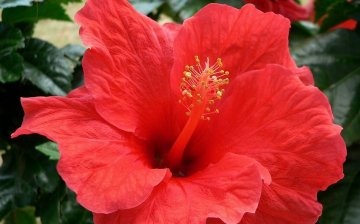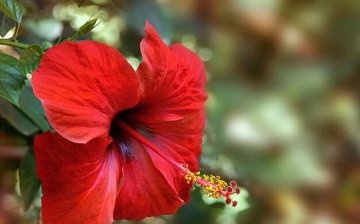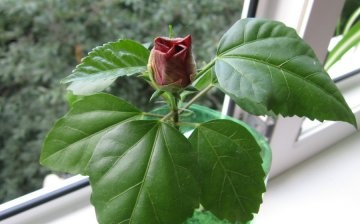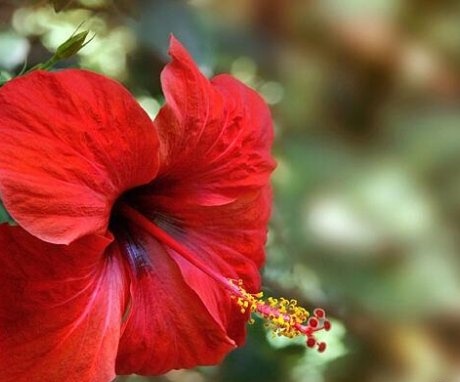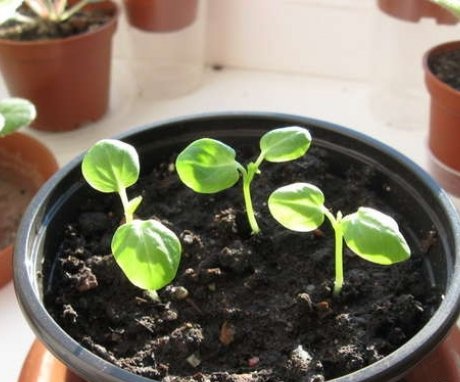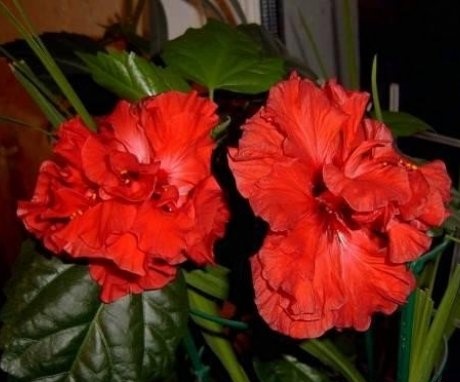Chinese rose care, breeding methods and possible problems
It is not difficult to grow a Chinese rose. Even a novice gardener can cope with care and reproduction.
- General information about the Chinese rose
- Growing a Chinese rose from seeds
- Chinese rose care
- Plant propagation by cuttings
- Diseases and pests of the Chinese rose
General information about the Chinese rose
The hibiscus or Chinese rose belongs to the Malvov family. The flower came to us from the countries of Southeast Asia and Polynesia. Growing a plant in our climate is not difficult, the plant has been carefully studied and adapted for temperate climates. The life cycle of a plant lasts over 20 years. The shrub can be shaped with scissors, after pruning, it begins to branch and develop in width. There are over 300 different species in nature.
Description of Chinese rose:
- Hibiscus is evergreen shrub, according to its parameters, it resembles a small tree.
- The maximum height of a Chinese rose is 4.5 meters, but it is almost impossible to achieve such a height at home.
- Old shoots are dark, woody, almost black with a brown tint.
- The leaves of the hibiscus are large, reach 15 cm in length, they are oval or egg-shaped in shape, have a regular arrangement, are located on petioles, the surface is glossy.
- The flowers of the Chinese rose are single, have long pedicels, below there are linear bracts.
- Depending on the type and variety, flowers can be double or semi-double, smooth, vary in shape, size and color of the petals.
- The corolla reaches 10 cm in size, the colors can be varied, most often white, yellow or purple.
- The cup is green.
- The flowering period begins in winter, the life of one flower lasts two days, but if you follow the rules of care, then the flower one after another will bloom continuously throughout the spring, summer and autumn. In total, hibiscus blooms for about a year.
In culture, the most widespread variety is "Hamburg", it has double red flowers, which looks like a common rose for everyone. The "Rose" variety has pink flowers, and the "Florida" variety is red with an orange tint, non-double flowers.
You can grow a Chinese rose as a shrub or standard plant.
Trimming is done at the end of winter. Bulk pots are used for planting.that look self-sufficient in apartments and offices.
Growing a Chinese rose from seeds
To grow hibiscus from seeds, you will have to stock up on a certain set of knowledge and, most importantly, patience. If you have two different hibiscus at home, you can breed your own variety.
It's easier to buy seeds in a store, but it's more interesting to extract them with your own hands from an existing flower. It is easier to do this with non-doubled representatives, because terry varieties do not set seeds well. To produce pollination, you need to take a cotton pad on which pollen will crumble. The cotton wool should turn yellow, after which the pollen is transferred to the pistil. The pollen will not crumble, so it is tedious to wipe the pistils directly with a disc.
Thus, pollination took place. The seed capsule is formed after the petals fall off. This process is lengthy and takes about 3 months... If buds are present on the shrub at this moment, then the rose may stop growing, because all the nutrients will be directed to the ripening of the seed capsule. At first, the box will darken, and soon it will open. This moment must not be missed and the seeds must be collected.
Fresh seeds do not need scarification, they have a high germination capacity and develop quickly.
If the seeds have been stored in a paper bag for some time, then the following scarification procedure can be performed: put sandpaper on the bottom of the box and sprinkle the seeds there, shake the box so that the top layer of seeds is slightly scratched. If the seeds are additionally soaked in water with the addition of honey, aloe or zircon juice, they will increase in size and germinate faster.
Seed planting tricks:
- Seeds are sown in a container in pre-prepared soil, light soil is used, which allows air to pass through well.
- The soil is mixed with a small amount of perlite.
- The seeds are buried 0.5 cm underground into moist soil.
- Further, greenhouse conditions are provided, the soil is covered with polyethylene or glass.
- It is better to sow each seed in a separate container so as not to dive and disturb the plant in the future.
- When the seed appears, he is given special care.
- The plant needs a lot of light, therefore, when moving from winter to spring, the sprouts are illuminated.
- To prevent the young stem from bending towards the light, the pot is periodically turned over.
- Watering is provided moderate, the Chinese rose does not tolerate drought or stagnant water.
Chinese rose care
To ensure proper care of hibiscus, you need to remember that the plant came to us from the tropics. External conditions should be as close to natural as possible. First of all, a sunny bright place in the apartment is chosen. If partial shade conditions are chosen, the plant will continue to develop, but not so actively, the flowering will be weak, short, not so bright, the buds may not form at all. From the sunny bright sun, the plant can be covered with a transparent curtain.
Another important condition for growing a Chinese rose is a large amount of moisture:
- Abundant watering is provided in spring and summer, in winter they switch to moderate watering.
- The earthen lump must be constantly moist, it must not be allowed to dry out.
Ambient temperature should not change dramatically, in winter it should not drop below 12 degrees. If the room is cool, then watering is reduced. The Chinese rose will also respond well to spraying the leaves, it is especially important to do this in dry air and in winter, when heating appliances are working.
If there is not enough light or moisture, as well as with a sharp change in conditions, the Chinese rose can throw off the buds, and in extreme cases the leaves.
You can not overdo it with fertilizers, hibiscus will also react badly to them. The plant needs mineral and organic fertilizers, which are brought in once a week. Under unfavorable conditions, the hibiscus goes into a state of dormancy, in which it is for several months, do not be afraid of this, you need to continue to care for the flower, water it and loosen the soil.
Until the plant reaches a large size, it is transplanted once a year. In the future, it is transplanted only when the roots fill the entire earthen lump, that is, about once every 4 years.
The soil for the Chinese rose is prepared according to the following scheme:
- 1 part humus earth
- 1 piece of leafy ground
- 2 parts of clay-sod land
- A handful of sand
- Small amount of bird droppings
With each transplant, excess roots are cut off. This activates the formation of new shoots with buds. Pruning is done immediately after transplanting. To start flowering in the fall, the shoots are cut in May.
Plant propagation by cuttings
Reproduction is carried out using cuttings. Cuttings are prepared in February and are harvested from an adult plant. For rooting, cut cuttings are placed in wet sand, after which greenhouse conditions are provided, the cutting is covered with plastic wrap or a transparent jar.
In this state, the cutting should be at least 1.5 months, sometimes more.
The ambient temperature at this time is maintained at 22-24 degrees.
You can also put cuttings in water until cuttings form. The roots are very brittle, so you will need to very carefully transplant the hibiscus into the soil.
The rooted petiole is transplanted into a narrow pot, its diameter should not exceed 9 cm.
The soil for a young plant should consist of the following components:
- 1 part sand
- 1 part turf land
- 1 piece of leafy ground
- 2 parts humus
In order for a young plant to develop faster, its branches can be cut off a little. All conditions for keeping hibiscus must also be met. It is imperative to cut off the branches that grow parallel to the main trunk.
You can reproduce in the summer. There should be no buds on the cuttings; a large amount of nutrients will be wasted on them. If the environmental conditions are favorable, then already on the 7th day, corked tissue will appear on the cut. Rooting will occur in 2 months. The main shoot will need to be pinched so that the plant grows in width and not height.
Diseases and pests of the Chinese rose
The Chinese rose is resistant to adverse external conditions and pests. If you make small mistakes in caring for the plant, then this will not lead to big problems. If the conditions of care are violated regularly, for example, the soil is not moistened, a draft enters the leaves, the air in the room is dry, then flowering may not occur, and buds may fall off during flowering. Over time, leaves may begin to wilt and fall off.
The Chinese rose loves stability, so the leaves can fall off when the temperature changes abruptly. Do not forget to water and fertilize the plant. With excessive moisture also leaves can fall and roots rot.
The most common pests of the Chinese rose are spider mites and aphids.
It is very difficult to detect a spider mite, it is small in size, so you can see it only with a magnifying glass. They settle on the underside of the leaves, they can be identified by the thin cobwebs with which they envelop the leaves. The spider mite develops rapidly and multiplies actively in dry air. As a preventive measure, the plant should be regularly sprayed, and the leaves should be wiped with a damp sponge. To remove existing insects, a soap solution is used. Insecticides also help well and quickly. Processing is carried out several times with an interval of one week until the insects are completely destroyed.
Aphids are also poorly visible to the naked eye. It most often settles on young buds and leaves. You need to fight insects quickly, since they multiply very quickly. A solution for the destruction of aphids can be purchased at the store, or you can make it yourself by stirring 1 g of nicotine sulfate in 1 liter of water.
More information can be found in the video.



